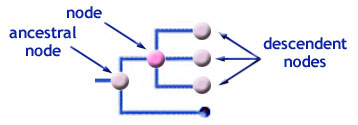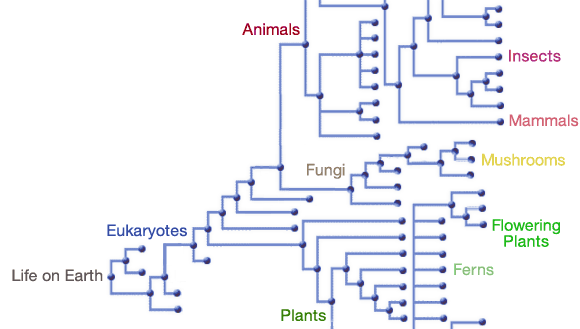Technical Development: Information Architecture
Nodes and the Shape of the Tree
The architecture and navigational structure of the Tree of Life Web Project is based upon the phylogenetic relationships between the organisms it catalogues and describes. This framework is achieved via a node-based information architecture. Nodes are branching points in the phylogenetic hierarchy of life, and the structure of the Tree of Life is at its core a collection of interconnected nodes. For example, the tree below features six nodes.

Let's focus on the pink node. This node represents a group of organisms, including all descendents of a common ancestor. Nodes can have two or more descendent nodes (representing subgroups of the ancestral node), and one or more ancestral nodes. (The Tree of Life does not currently support nodes with multiple ancestral nodes, but that will be necessary in the future to fully accommodate those portions of the ToL with an anastomosing genetic history.)

If we step back and look at a larger portion of the tree, we see a collection of interconnected nodes....

...representing the hierarchy of groups of organisms and their descendent subgroups.

Information Architecture of the Tree of Life Project:
- Nodes and the Shape of the Tree
- Objects Attached to Nodes
- Harvesting ToL Data
- Presenting Information on ToL Pages
 Go to quick links
Go to quick search
Go to navigation for this section of the ToL site
Go to detailed links for the ToL site
Go to quick links
Go to quick search
Go to navigation for this section of the ToL site
Go to detailed links for the ToL site